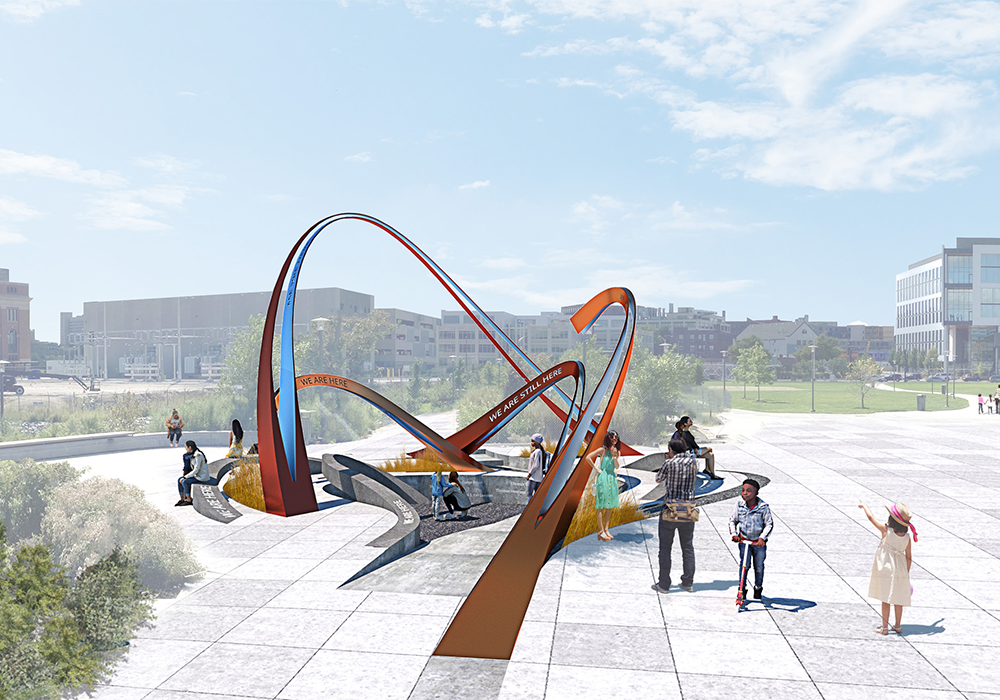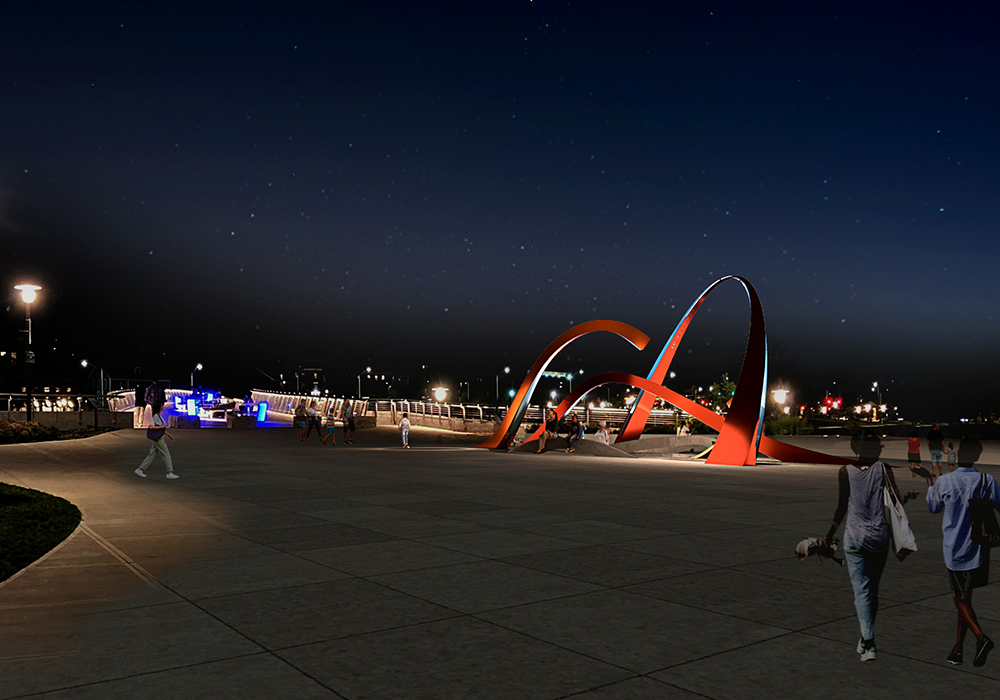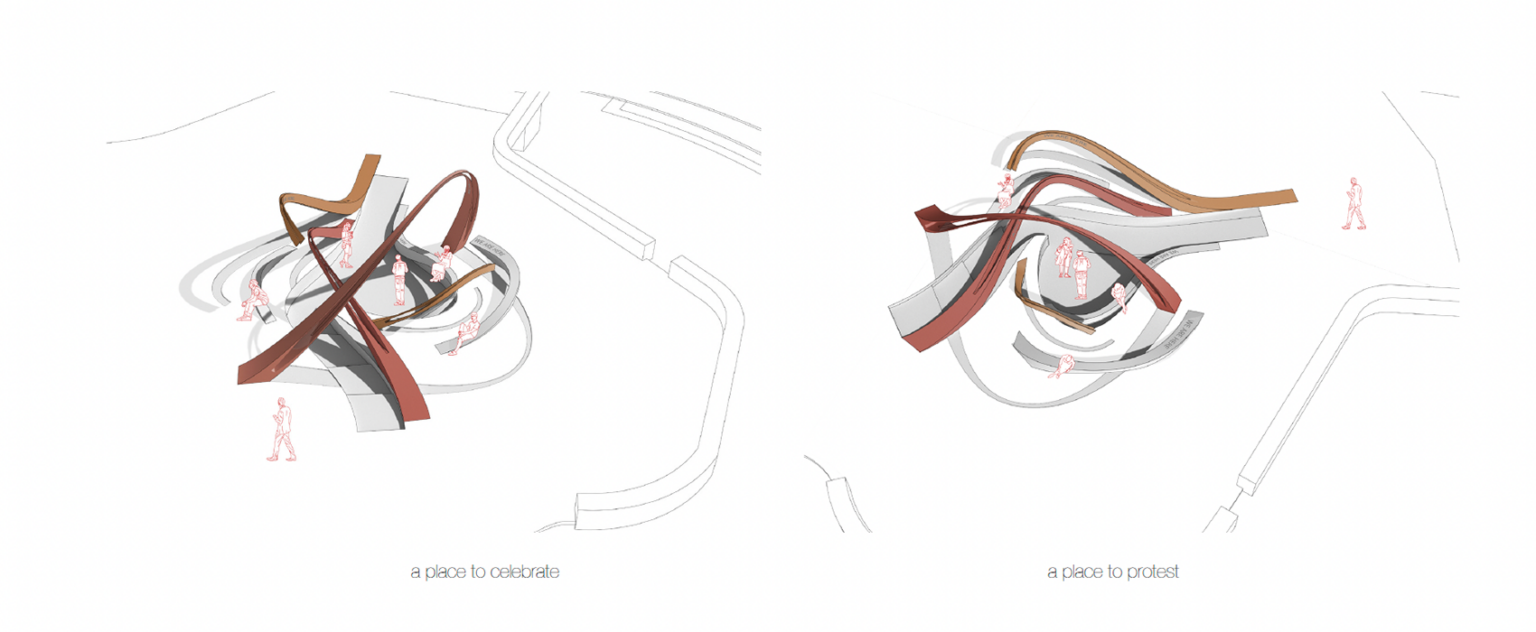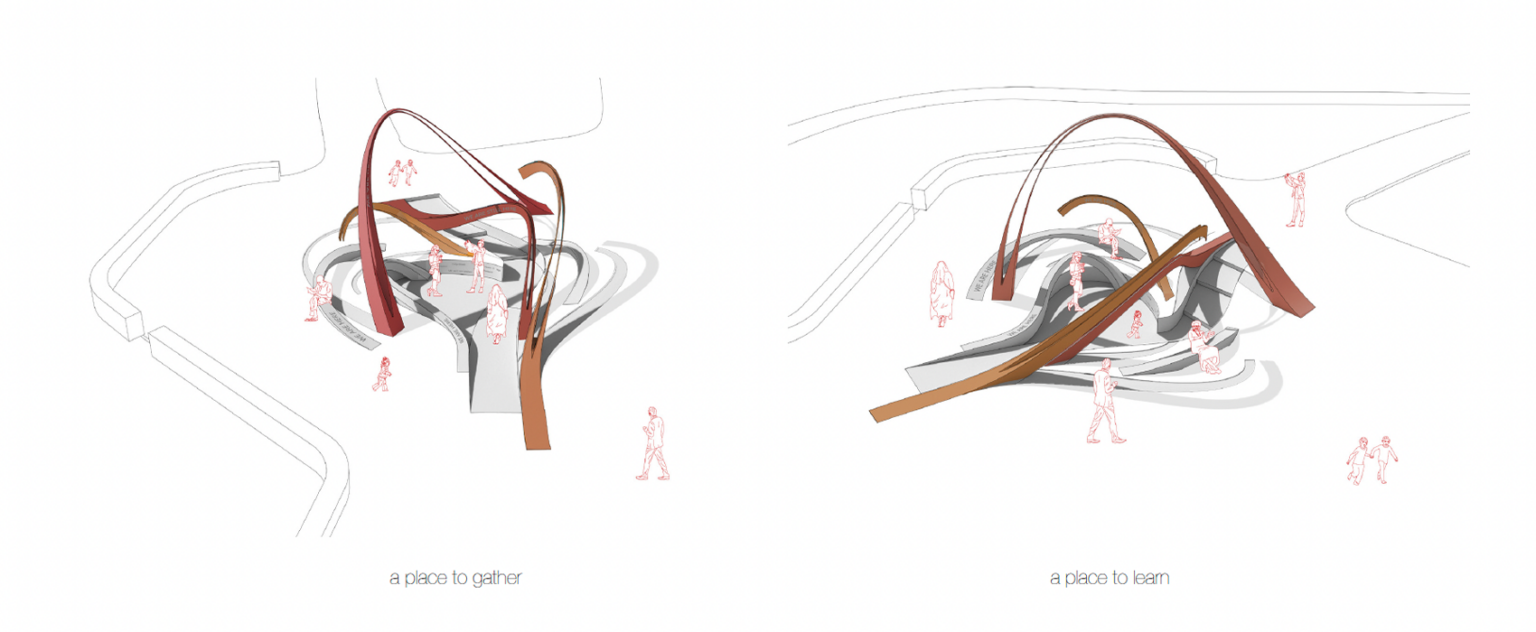For many of us, our experience with monuments is not much more than viewing a statue on a school trip. But there is much more that these commemorative pieces of art can embody. At Studio Luz, we think of monuments as much more than just static structures — instead, we see them as vehicles for storytelling and opportunities for community building.
One project where our studio put this idea into practice is WOVEN: a monument proposal for Providence’s Landmark Public Art Project. This proposal was created in collaboration with artist and architect Nina Cooke John of Studio Cooke John, who recently completed the Harriet Tubman Monument in Newark, NJ. In 2021, Providence’s Department of Art, Culture, and Tourism made a call for submissions and selected a handful of artists to develop a design for a work of public art to be sited in Providence Innovation District Park. This permanent work of art, for which WOVEN was a finalist, is set to be the first of its kind in the city, and was the first activation of Providence’s Art in City Life Ordinance.


Though it is of course an expansive undertaking to tell the stories of all the people who contributed to the vibrant, diverse, and creative city of Providence, this structure is an attempt to capture the spirit of and pay respect to those who historically occupied Providence. As Principal Hansy Better Barraza of Studio Luz Architects and Artist/Architect Nina Cooke John said in their presentation of the project, “what we can do is begin to unearth the truths through a process of excavation of the intertwined history still present in the land.”
WOVEN is composed of ribbon-like forms that intertwine to create a basket, weaving together the many traditions represented in Providence. The design references the ‘seven hills of Providence’ in the undulations of the form, as well as the trails followed by Indigenous people of the area. Hansy and Nina looked back through history and followed the trails of the Pequots, the Narragansett, and the Wampanoag: Indigenous peoples who made their mark on the land and traded and shared their customs, food and sacred artifacts. In the installation, those historical trails converge to create a new place of connection. As today’s residents forge their modern paths through Providence, they are able to meet each other in this place, and peacefully exchange just as their ancestors did. Ultimately, WOVEN serves as a place of exchange, community, and communication — a place to gather, to celebrate, to protest, to learn — while referencing the area’s rich history.


The design also features the names of local heroes inscribed on the walls and on the steps. Hansy and Nina decided that in order to determine whose names would be memorialized by the site, the community needed to have an opportunity to suggest the names of their local heroes, a process of community engagement which would be facilitated through collaborative workshops. Lastly, the design ensures safety and full access for everyone by incorporating accessibility measures, including an accessible ramp. Overall, WOVEN is made to be a piece of public art that rethinks what a landmark can be, and that takes steps to educate and connect its community.
Watch Hansy and Nina’s presentation for WOVEN below.